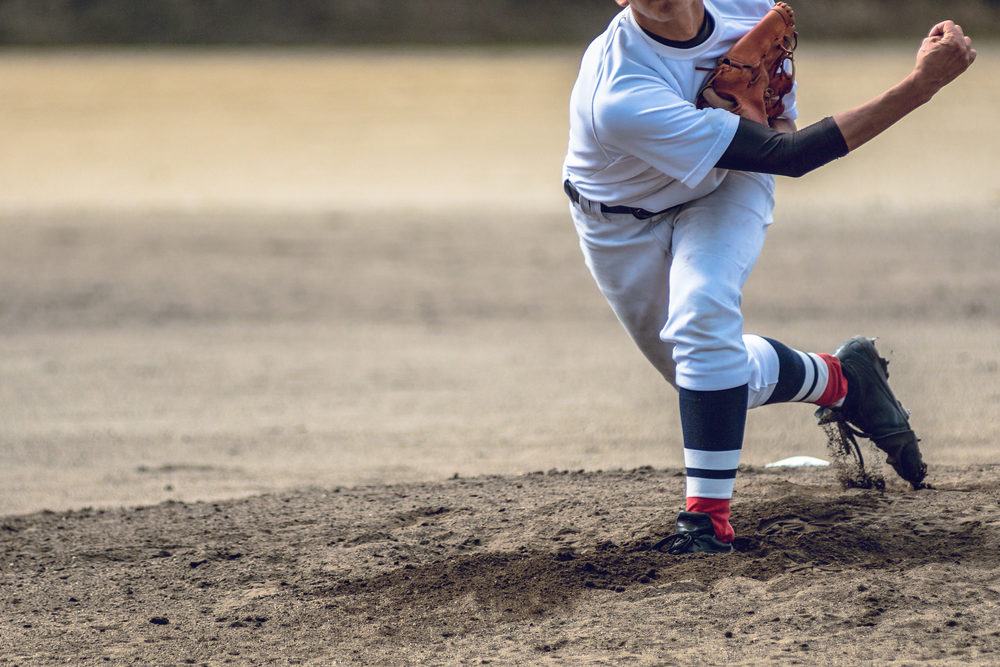Baseball players are prone to shoulder injuries like rotator cuff tears and shoulder impingement. Here’s how you can stay safe while out on the field.
Whether in youth league or the major leagues, the repetitive overhead motion of throwing a ball puts baseball players at risk of certain shoulder injuries. Pitchers, in particular, are susceptible to ligament and muscle tears in the shoulder.
As with any type of injury, these orthopedic disorders can be avoided or managed with some preventative tips and proper treatment should trauma occur.
Shoulder Injuries in Baseball
Here are some common injuries baseball players often face:
Rotator Cuff Tear
The shoulder is held together by a network of tendons that connects the upper arm bone (the humerus) to the shoulder socket. This arrangement gives the joint its wide range of motion, but also makes it vulnerable to overuse injuries or sudden trauma. Characteristics of a rotator cuff tear include pain that worsens when lifting the arm overhead, weakness in the arm, and a dull ache in the shoulder.
Treatment for rotator cuff tears depends on the severity of the rupture, with conservative therapy including rest, icing, steroidal injections, and physical therapy. More serious tears may necessitate arthroscopic surgery to reattach the torn tendon to the bone.
Shoulder Impingement Syndrome
Shoulder impingement syndrome — a pinching of the rotator cuff tendons against the bone at the top of the shoulder (acromion) — often causes irritation and inflammation. In addition to pain and reduced mobility, shoulder impingement syndrome can lead to tendonitis or bursitis.
Baseball players who suspect they have a shoulder impingement should avoid throwing for a while to give the joint time to heal. Physical therapy to stretch and strengthen the shoulder muscles can restore range of motion. If physical therapy fails to stop the pain, arthroscopic surgery to relieve the tension between the acromion bone and tendons may be required.
SLAP Tears
A Superior Labral tear from Anterior to Posterior — or SLAP tear — is another common injury among baseball players. A SLAP tear is a rupture in the labrum, a soft rim of cartilage lining the shoulder socket, which can develop after many overhead throws. SLAP tear symptoms range from pain and weakness to a limited range of motion and a clicking sound in the shoulder.
Physical therapy and anti-inflammatory medications can help reduce discomfort for smaller SLAP tears. Since SLAP tears don’t typically heal on their own, however, arthroscopic surgery is often recommended to repair the damaged labrum and biceps tendon and stabilize the shoulder.
Shoulder Instability
Over time, ligaments in the shoulder may weaken as the result of regular throwing. Loose ligaments lead to a partial dislocation of the humerus bone (the ball of the shoulder joint) from the shoulder socket. Pain and a “dead arm” sensation are the primary signs of shoulder instability.
Rest, anti-inflammatory medications, and physical therapy to build up the rotator cuff and the scapular muscles is the initial line of treatment. If the dislocation was due to a sudden trauma such as a cartilage or ligament tear, then arthroscopic surgery may be needed to stabilize the joint and prevent another dislocation.
Preventing Shoulder Injuries
Before players pick up a ball and glove, they can lessen the chance of shoulder injuries by taking some preventative measures.
Warm Up
Running and throwing without warming up only increases the odds of an injury. Players should start with light cardio workouts like jogging or cycling to loosen muscles. Dynamic stretching also prepares players for more strenuous activities. Warm ups should last between five to 20 minutes prior to the game.
Hydrate
Dehydration restricts blood flow to muscles, which in turn could lead to injury. During the game, players should drink plenty of water, and also eat a diet high in protein and carbohydrates to support muscle strength.
Train Properly
Proper throwing techniques cut down on the possibility of an injury. Coaches can make sure players maintain the same throwing motion so they don’t risk an injury with out-of-synch mechanics.
Rest
Players who feel tired or achy should take a break and give their bodies time to rest and heal. Coaches can also monitor players for fatigue that could lead to improper form and injury.
Treatment for Shoulder Injuries
At New York Bone & Joint Specialists, we have doctors and physical therapists with many years of experience in treating shoulder injuries. Our experienced staff will help you get back on the baseball field as soon as possible and enjoy the game you love. Contact us today for an appointment.




